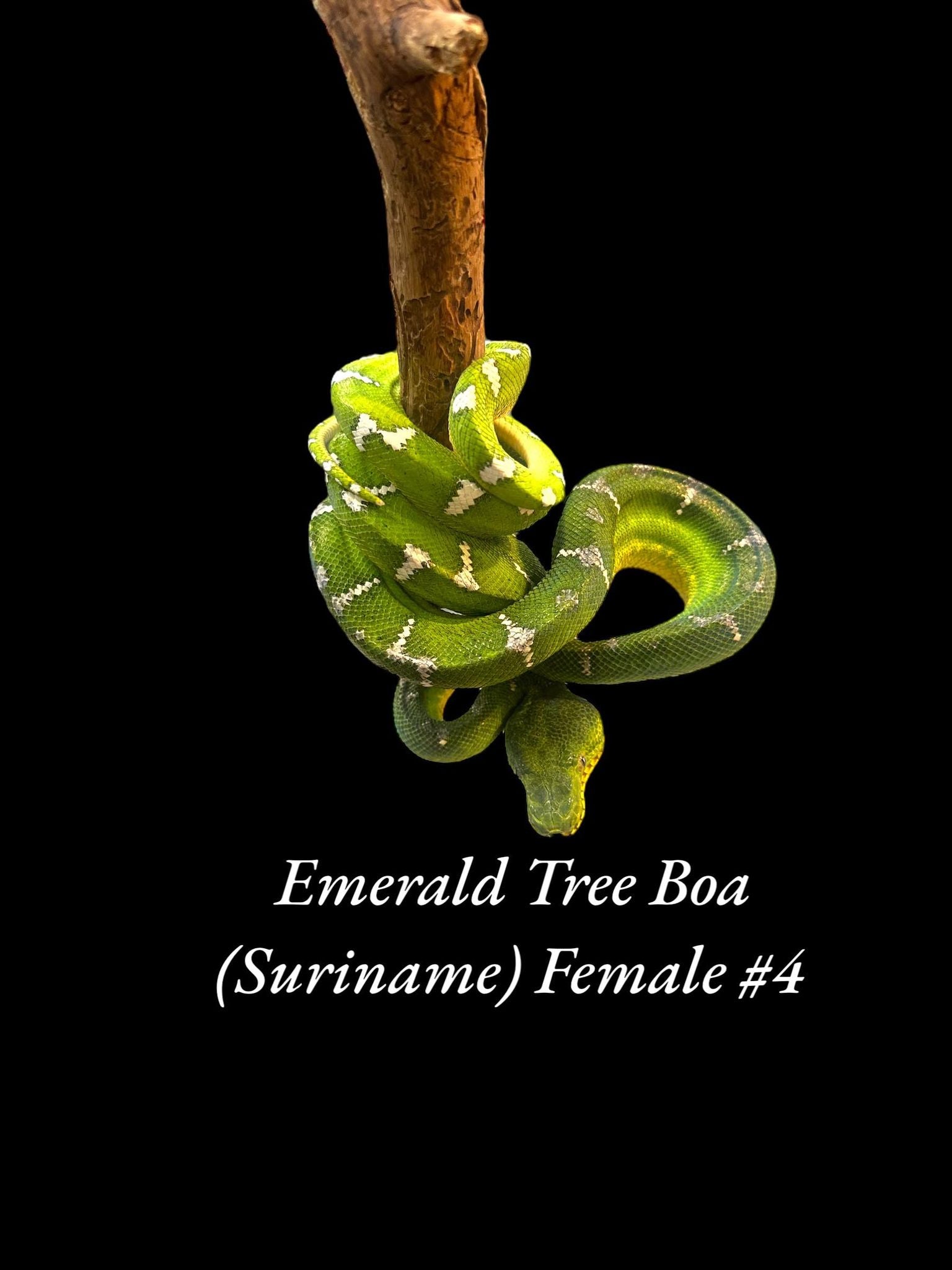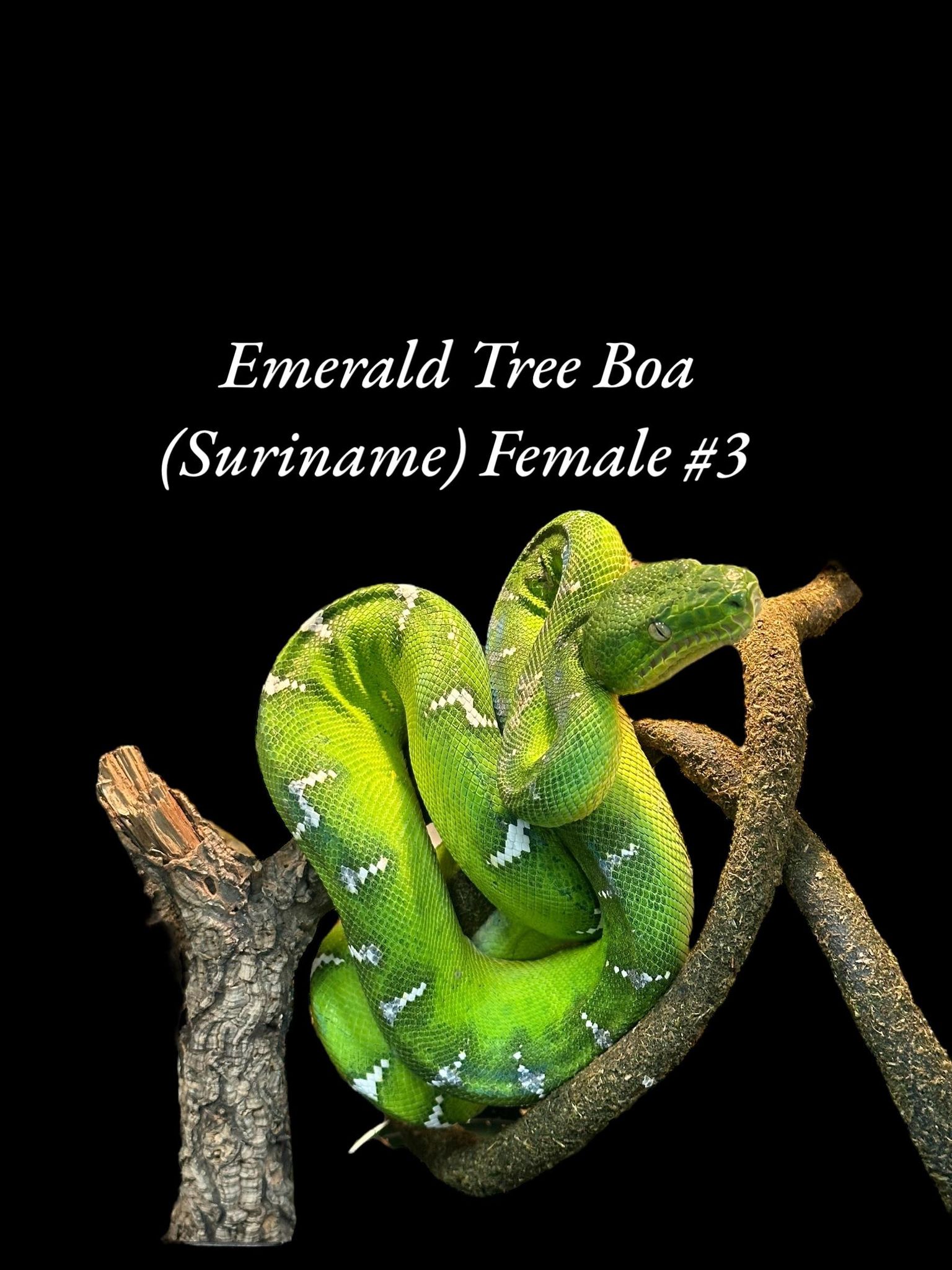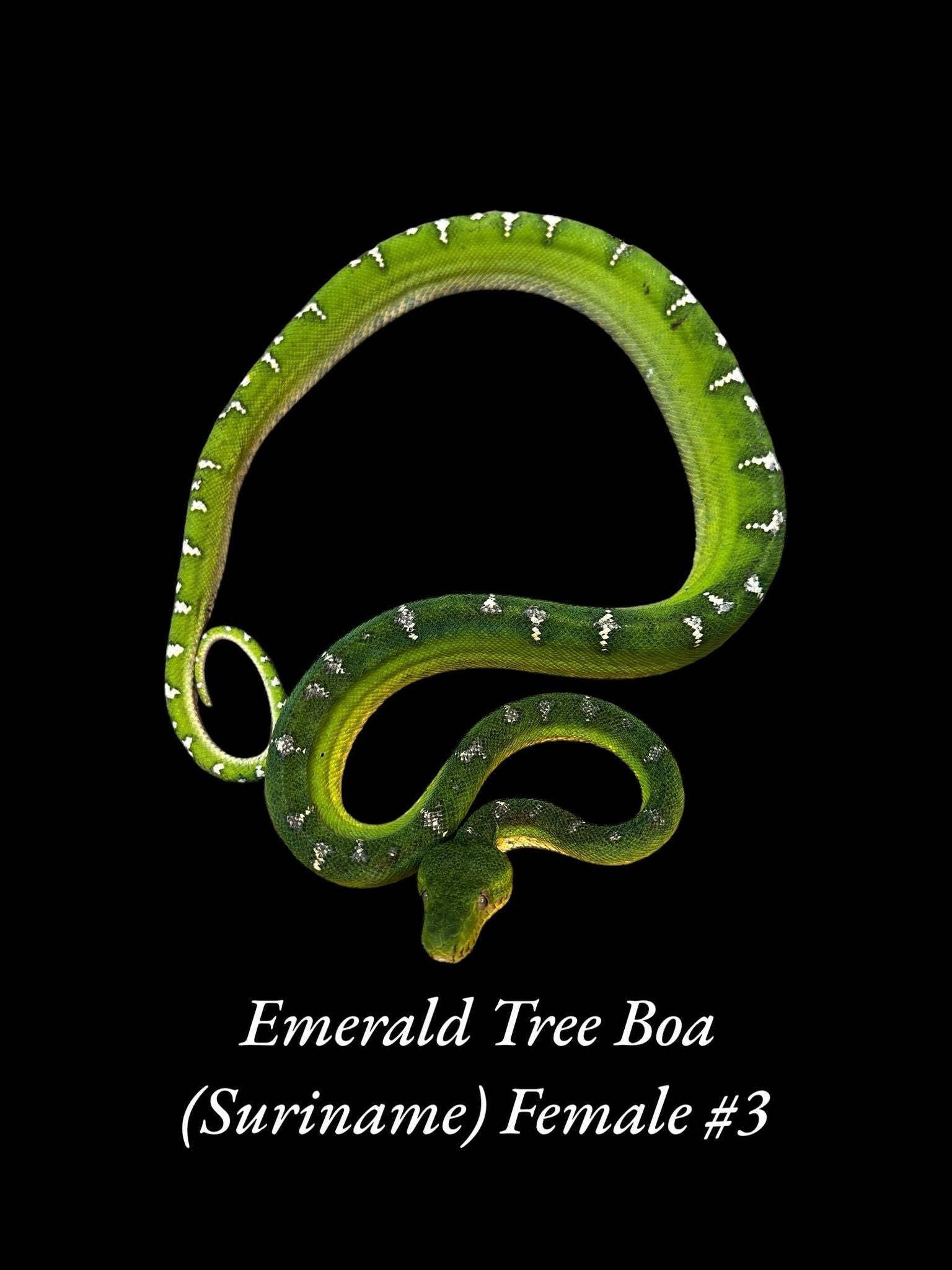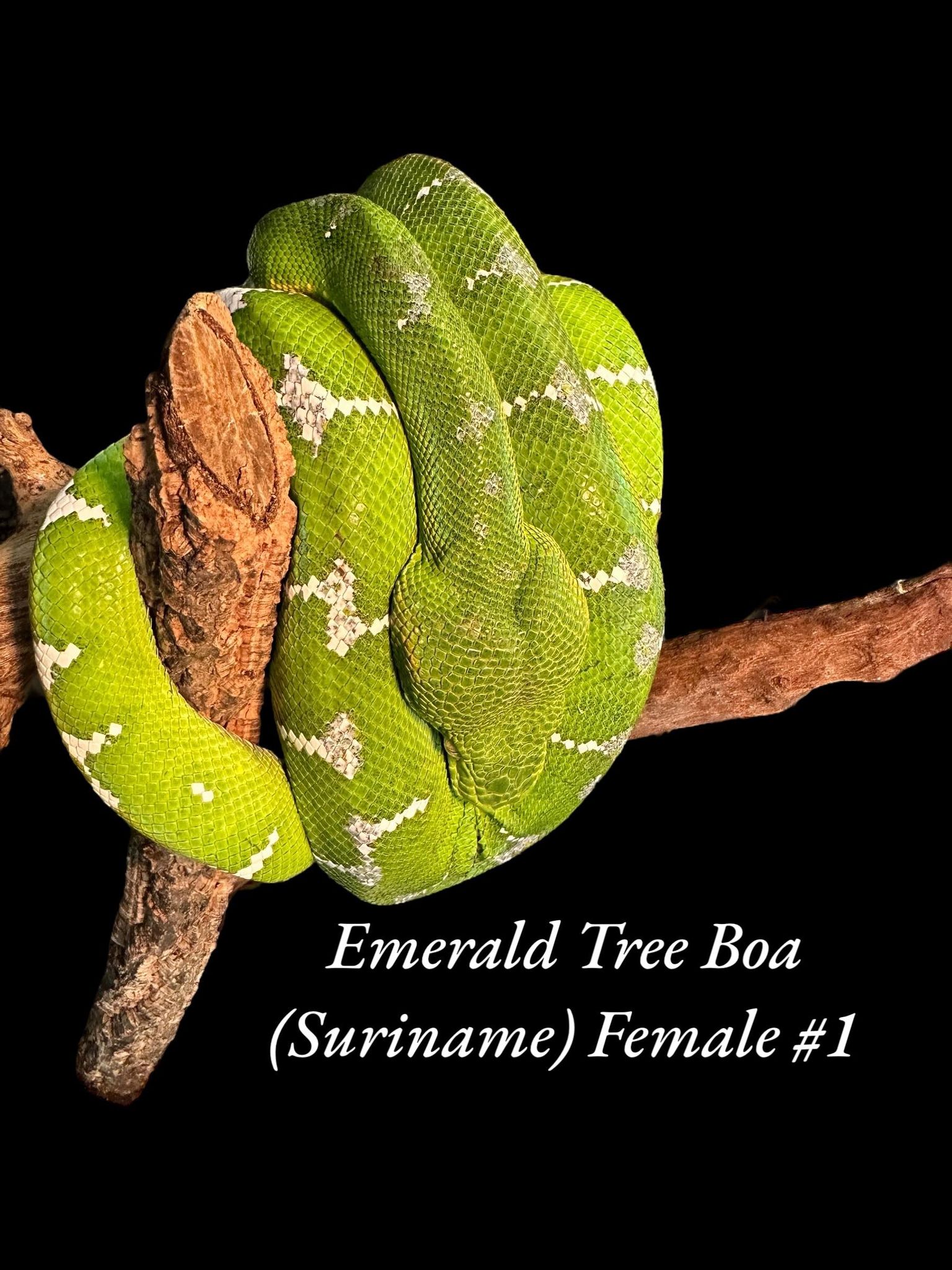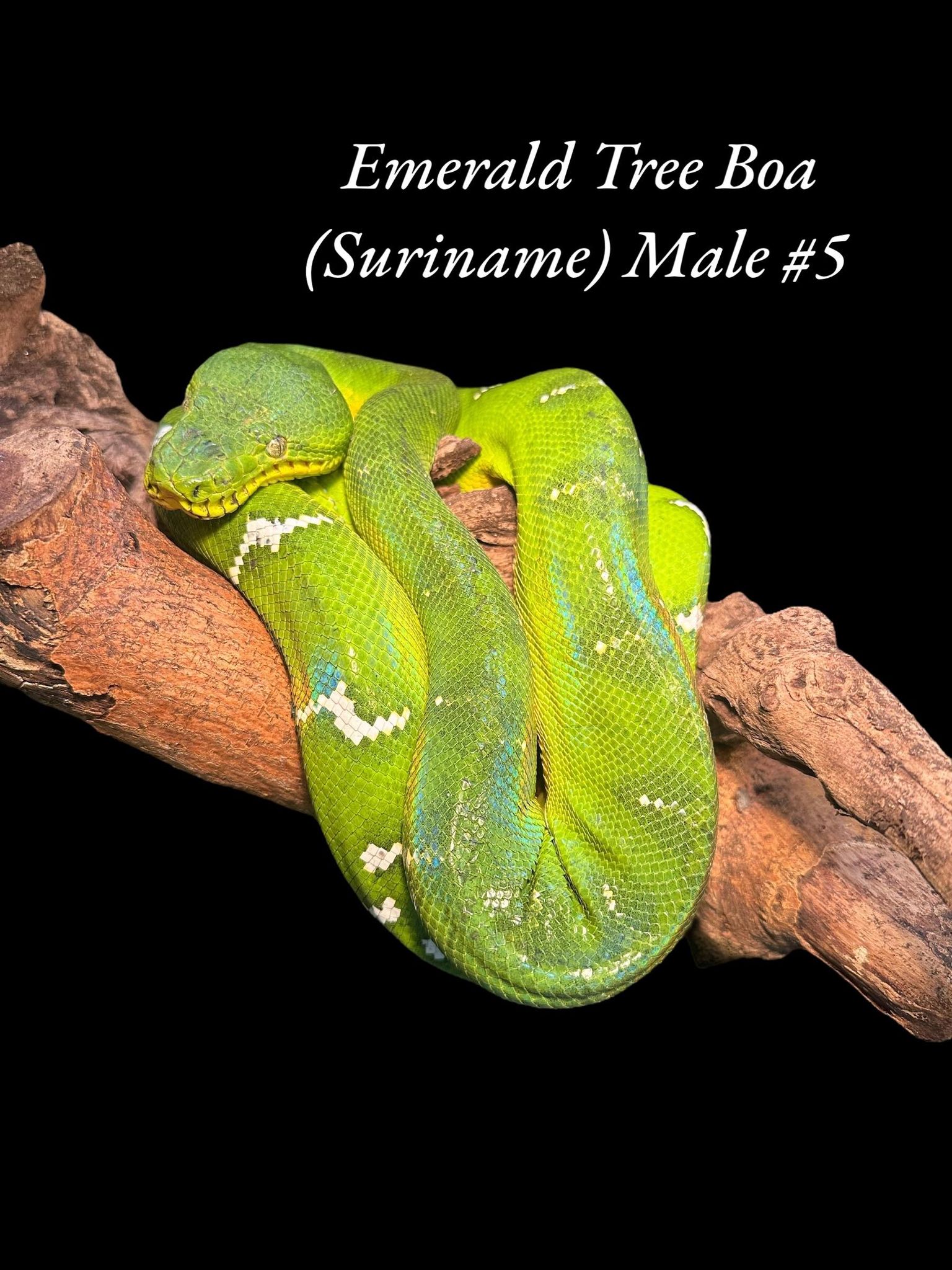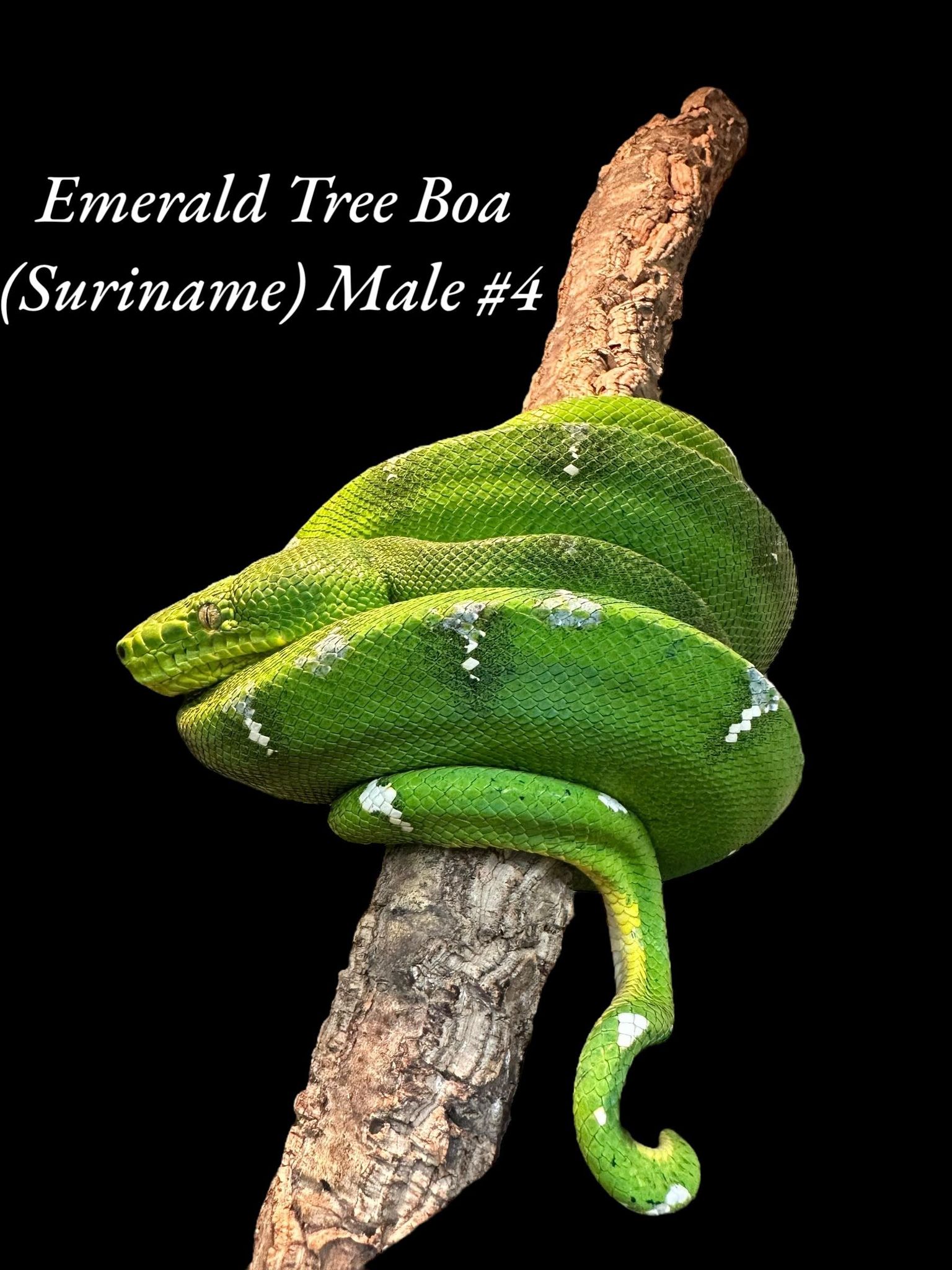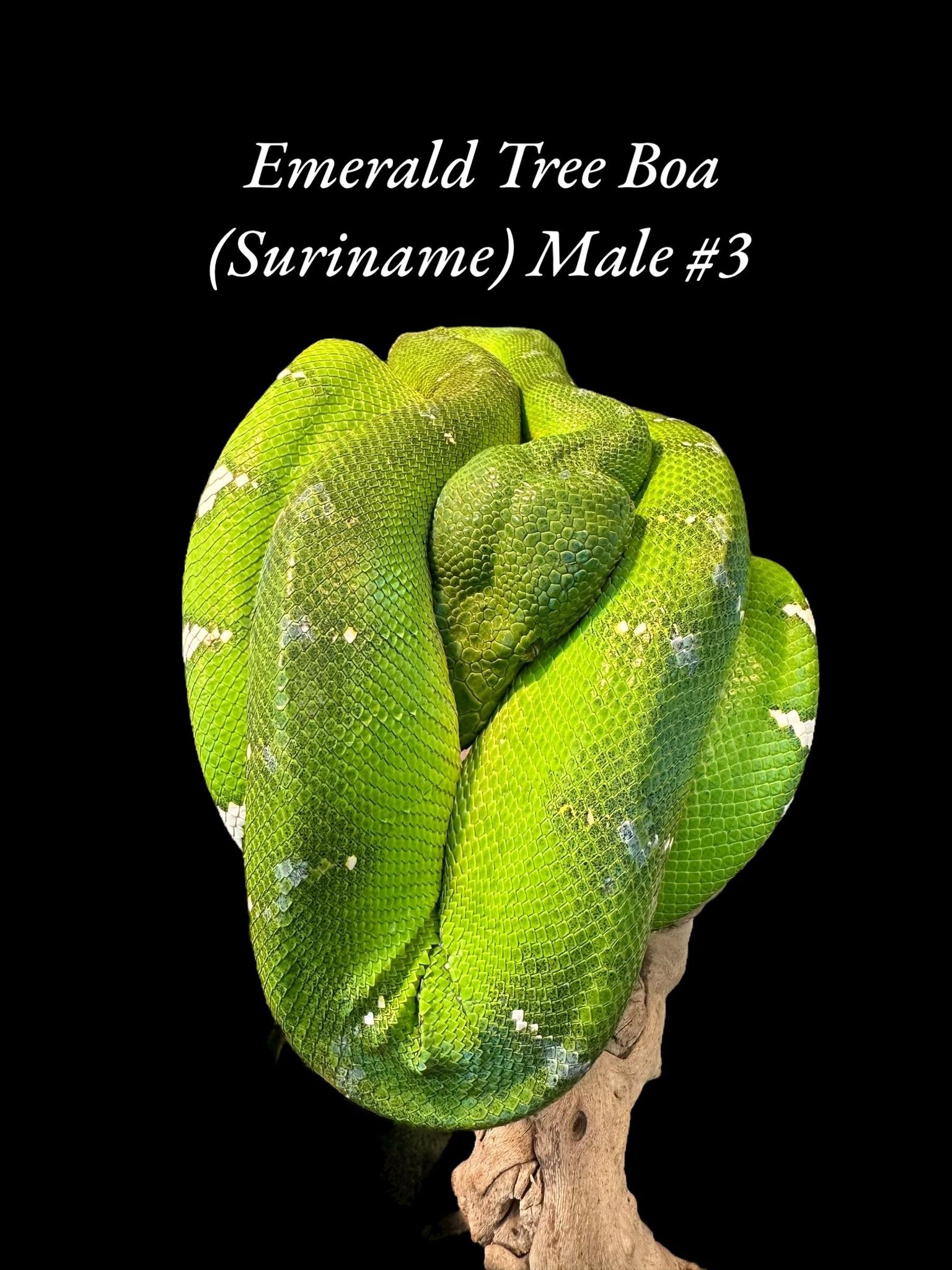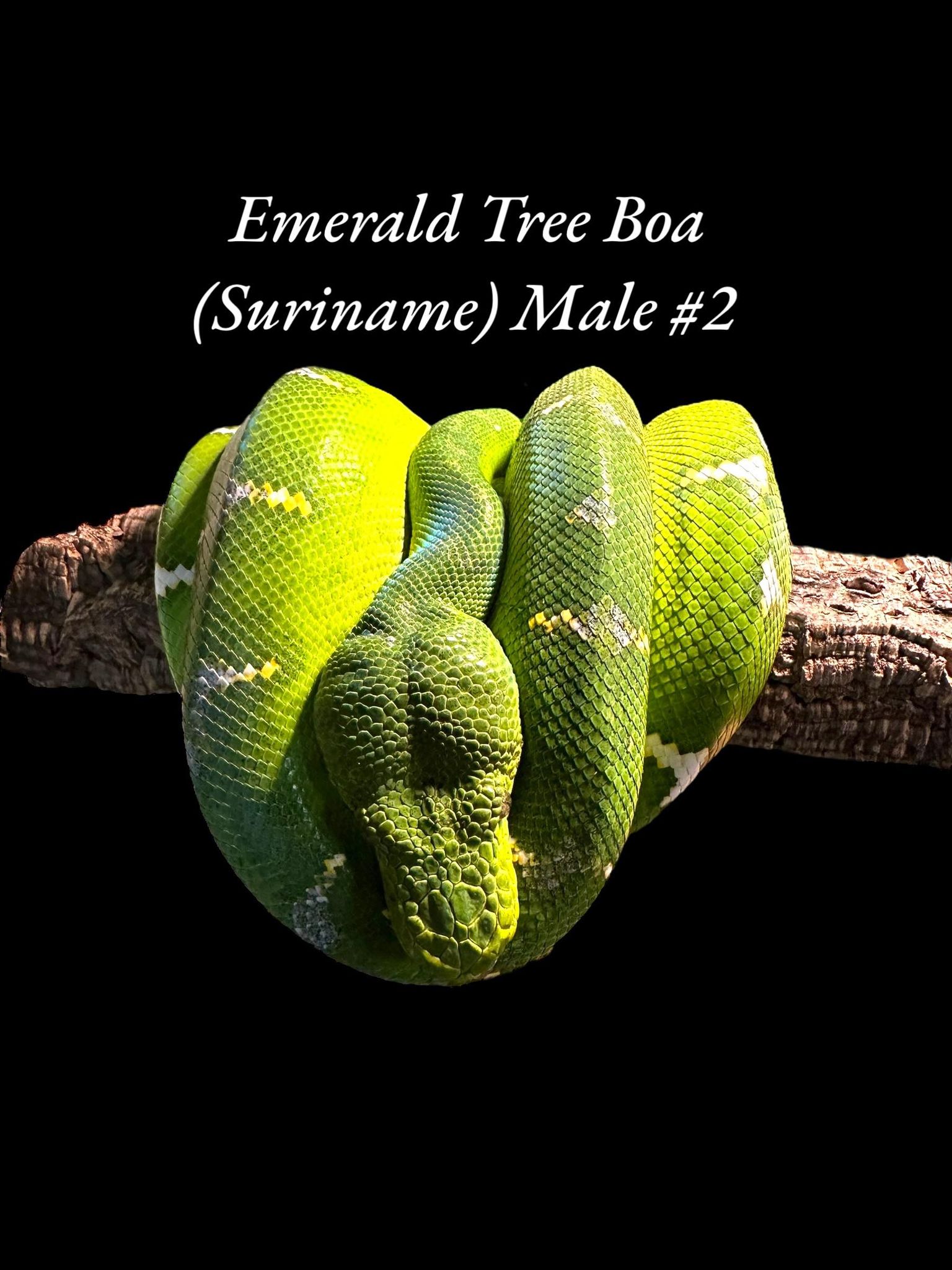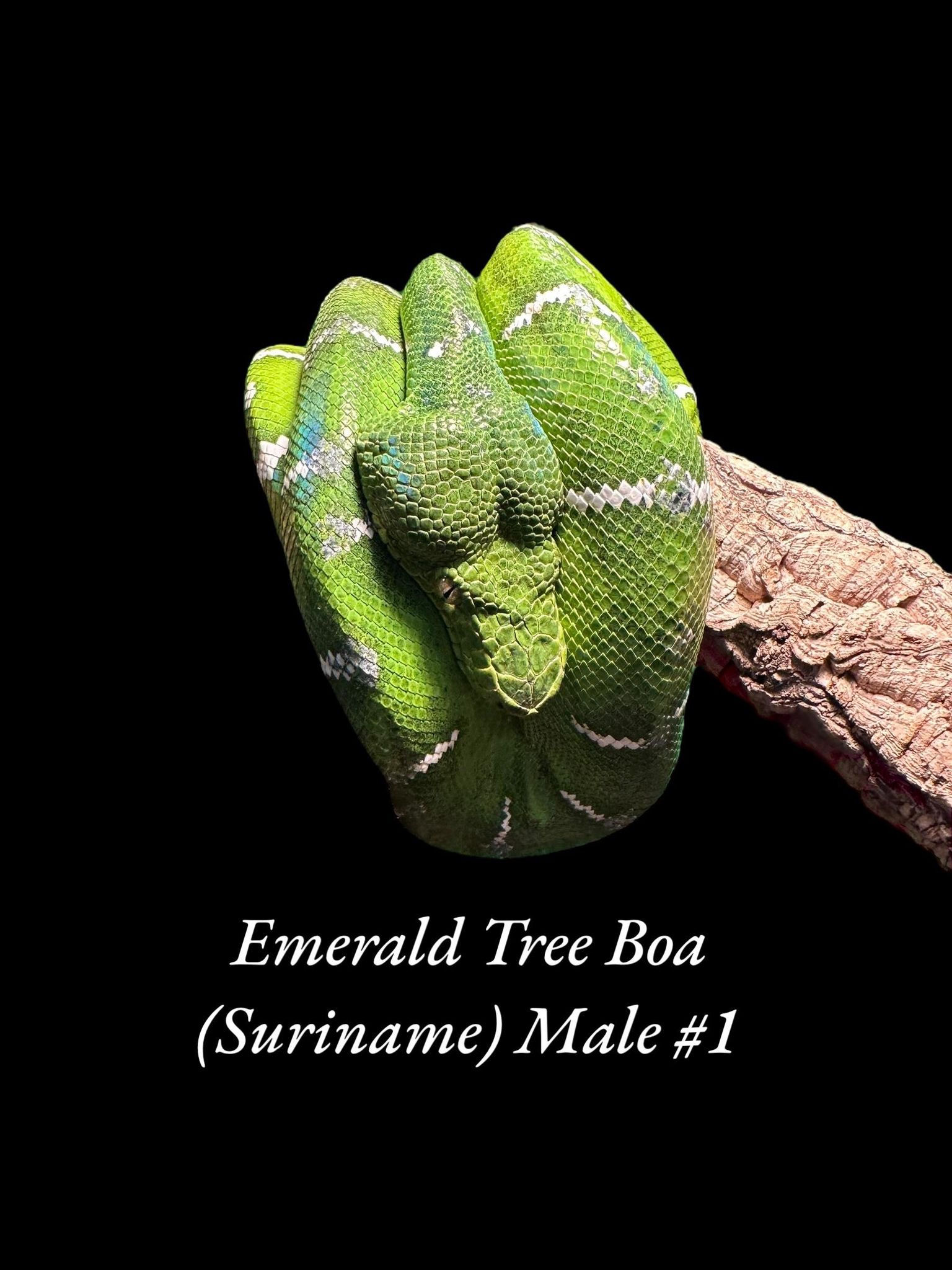Photo Disclaimer
Description
Emerald Tree Boa (Suriname Form)
Corallus caninus
Common Name: Suriname Emerald Tree Boa
Species Overview
-
Size: Adults average 5–7 feet (1.5–2.1 m), with females being heavier-bodied than males.
-
Appearance: Suriname emerald tree boas are typically emerald-green with irregular white markings, similar to Guyana forms. Their markings often appear as broken, uneven patches across the dorsal line, sometimes thinner than Guyana examples. Compared to Basin emeralds, Suriname forms are slimmer and less robust, with a more gracile build.
-
Distribution: Native to Suriname and surrounding regions in northeastern South America, overlapping with Guyana forms.
-
Habitat: Arboreal, inhabiting humid tropical forests, jungle canopy edges, and swamp margins, relying on camouflage to ambush prey.
-
Behaviour: Nocturnal ambush predators, coiling on branches with their head at the center of the coil. They feed primarily on birds, small mammals, and reptiles.
Captive Care
-
Enclosure: Vertical space is essential. Provide a 3–4′ tall enclosure with at least 4′ × 2′ of floor space for adults. Furnish with sturdy horizontal perches, cork bark, foliage, and climbing options.
-
Temperature & Humidity: Maintain an ambient range of 78–82°F (25–28°C) with a small basking area of 85–86°F (29–30°C). Nighttime drops to 74–76°F (23–24°C) are recommended. Humidity should remain 70–90%, supported by misting and a large water source, but balanced with strong ventilation.
-
Diet: Juveniles feed every 10–14 days on small rodents; adults every 21–28 days. In the wild, they also consume birds and reptiles, but rodents are the standard captive diet.
-
Behaviour in Captivity: Suriname emeralds are often defensive, especially as juveniles, and may strike when disturbed. They are best kept as display species, with minimal handling.
-
Special Considerations: Sensitive to improper humidity and stagnant airflow; careful balance is needed to prevent scale rot and respiratory infections.
Locality Note
The Suriname emerald tree boa is part of the northern group of Corallus caninus. They are closely related to Guyana forms and share similar size, build, and temperament. Their markings are generally broken and patchy, lacking the bold, continuous white dorsal stripe of Basin emerald tree boas. Keepers often note Suriname forms as being particularly defensive compared to other localities.

